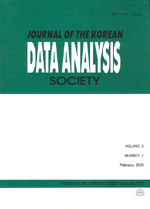경상연구개발비의 자본화 분석
An Empirical Analysis on the Capitalization of Ordinary R&D Expenditure
- 한국자료분석학회
- Journal of The Korean Data Analysis Society (JKDAS)
- Vol.10 No.6
-
2008.123333 - 3345 (13 pages)
- 18

이 연구는 경상연구개발비의 자본화 가능성을 검증하고자 하였다. 이를 위해 우리나라 상장기업을 대상으로 경상연구개발비가 기업 생산성 향상에 시차적인 영향을 주는지를 분석하였다. 경상연구개발비가 기업 생산성 향상에 얼마정도의 기간 동안 영향을 미치는지를 분석함으로써 경상연구개발비의 자본화 가능성을 증명하고자 하였다. 이를 위해 이 연구에서는 [H1: 경상연구개발비는 생산성에 정(+)의 영향을 미친다] 와 [H2: 경상연구개발비는 생산성에 시차적인 영향을 미친다] 라는 두 가지 가설을 설정하여 이를 검증하였다. 실증분석결과 이 연구의 가설1 [H1: 경상연구개발비는 생산성에 정(+)의 영향을 미친다] 은 지지되었고, 가설2 [H2: 경상연구개발비는 생산성에 시차적인 영향을 미친다] 도 지지되었다. 특히 경상연구개발비는 생산성에 최소 1년에서 최장 12년 후에까지 영향을 미치는 것으로 나타났다. 이러한 분석결과는 경상연구개발비가 미래의 현금흐름 잠재력을 가진 자산으로서의 성격을 갖고 있으며, 또한 현재의 회계실무가 어느 정도 개선될 필요가 있다는 것을 의미하고 있다.
This paper investigates whether ordinary R&D expenditure can be capitalized. To do this, the paper empirically examines the time lag impact of ordinary R&D expenditure on firm s productivity in the Korean stock markets. Through this empirical research we can test whether ordinary R&D expenditure can create future potential of cash flows. Empirical results support hypothesis 1 [ordinary R&D expenditure has positive impact on firms productivity] and hypothesis 2[ordinary R&D expenditure has time lag impact on firms productivity] . This show that ordinary R&D expenditure has impact on firm s productivity and the time interval of ordinary R&D expenditure impact on firm s productivity is from 1 to 12 year. This result suggests that ordinary R&D expenditure is an asset can create firm s future cash flows.
1. 서론
2. 선행연구 고찰
3. 연구가설의 설정 및 연구모형
4. 실증분석 및 결과해석
5. 결론
참고문헌
(0)
(0)